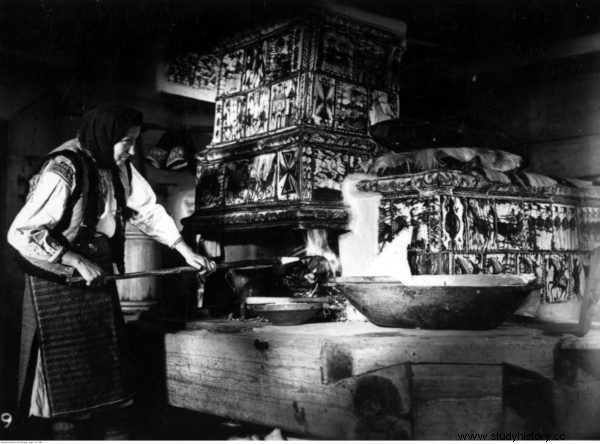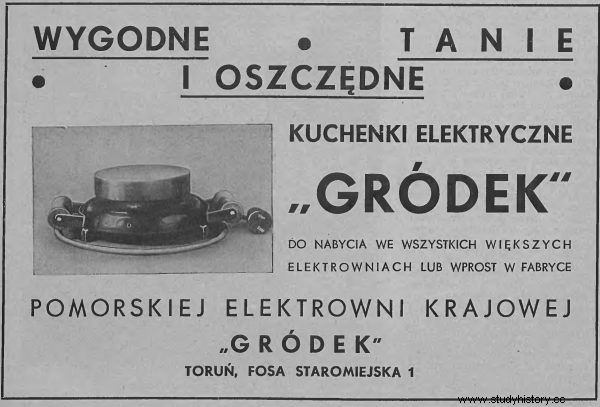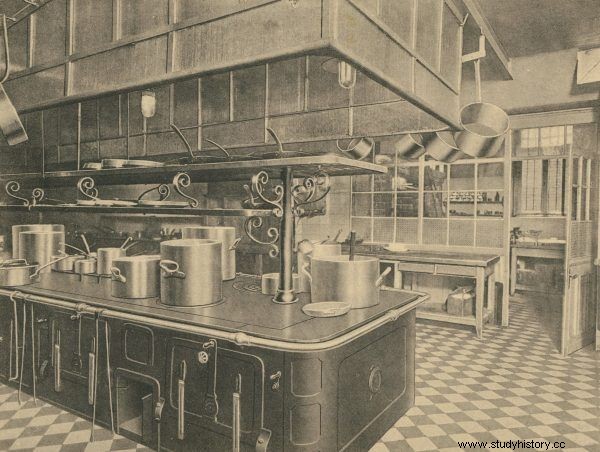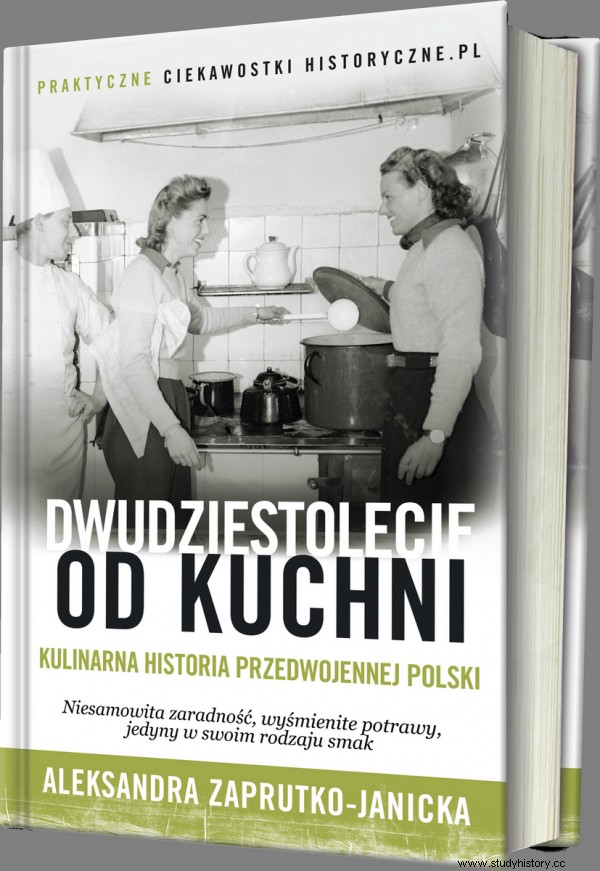Every lady dreamed about this equipment. It allowed to save time, nerves and money. He was a source of pride for well-to-do ladies and a real godsend for ordinary Polish women.
Electricity appeared on the Vistula River even before World War I, but the universal electrification of towns and villages remained the melody of the future for the entire twenty years. Most of the better off intellectual families from large cities lived in buildings connected to the transmission network. But in the workers' homes, electricity was still a luxury, and even a sensation. The situation in the countryside was the worst. And even in the very suburbs of the capital.
In 1932, journalists of the “Dobry Evening! Kurier Czerwony ”organized a road trip from Warsaw towards Ostrów Mazowiecka. They stopped in one of the first villages and looked into a random house. It is dark in the room, there is no money for kerosene or even matches. "We are already used to the dark" - emphasizes the host, with visible resignation. And it is no exception, because even on the outskirts of Warsaw, “in the windows of suburban households, the light of oil lamps glistens faintly. Only electricity here and there. "

Traditional tiled stoves took up space, smelt and smeared. Not like electric cookers.
New for selected
The specialists had no doubts:the electricity made it possible to completely change the life of every family. In the same 1932, in the pages of "Dom. Settlements. Apartments ", an entire article about" rational household appliances "was published. Engineer Sawicki pointed out that in modern construction one should move away from outdated kitchen and heating solutions that require cumbersome supervision and operation, such as room stoves or tiled kitchens.
In order to arrange a flat comfortably and functionally (compared to a traditional model), according to Sawicki, electricity was primarily needed:
A properly made electrical installation is enough for this purpose, ie supplying the apartment with a few well-placed contacts (plug sockets). Each of them can be connected successively with various portable electrical devices, i.e. heaters, such as:a stove, stove, heater, iron, etc., or finally small electric motors, used for various purposes, be it kitchen or toilet.
Of all these modern appliances, however, the electric cooker played the most important role. A quiet and forgotten heroine of a pre-war Polish woman.
Clean, progressive, safe
The appearance of the electric cooker allowed to revolutionize the approach to furnishing apartments. It was no longer necessary to create a separate cooking room in the smallest one-room cubicles. As Sawicki emphasized, setting up a small electric cooker in a flat recovers the entire "room" for representative and practical purposes. The stove was not only compact, but also did not smoke or disturb. It resembled a table with hot plates and an oven, or, in the case of a smaller device, it was just a round hob for one pot.
A columnist for Ilustrowana Republika was delighted with it enormously in the early 1930s, calling it a true friend of the housewife and an expression of progress. In his opinion, it was not only a good solution. She was simply the best, leaving the gas stove far behind, not to mention the coal stove or stoves for liquid fuels, kerosene or contaminated spirit.

Advertising of electric cookers from the pre-war press.
It was enough to connect the device to electricity and that's it. No smoke, no dust and dirt, and most of all: no worries about gas poisoning or poisoning . And:"most importantly, it does not take oxygen from the air, so it does not consume it, because the conversion of electrical energy into heat takes place without oxygen". There was only one problem (apart from the exorbitant prices) - this miracle of technique had to be learned to cook.
Free Modernity Course
In May 1934, a reporter for Głos Poranny from Łódź went to a free cooking course with electricity. He also emphasized, as if justifying a topic that was "not compatible" with his gender, that every person following technological development should necessarily look into a modernly furnished, electrified kitchen .
His report, entitled In the temple of comfort, aesthetics and progress he started with a small joke that today we would consider eminently sexist:
It would seem that a man who is not a cook by profession, but a foodie by vocation, but who nevertheless spends an hour in the kitchen, must be a firefighter who came to visit your beloved.

Restaurant kitchen of one of Warsaw hotels.
Well, a reporter's job duties forced him to break, and he found himself in front of enormous windows marked "Free Electricity Cooking Lessons." There was a small crowd in the street with him. Ordinary residents of Łódź did not believe that in their city you can get something for free…
The courses covering all areas of thermal food processing ("cooking, baking cookies, frying and baking meat, cooking in an oven and sterilization") were attended by ladies from all layers of society. There were also elegant ladies in expensive dresses, coming to class with their own maid, and young girls working for the rich as domestic helpers.
The classroom, as emphasized by the reporter of “Głos Poranny”, was very clean, even sterile, like in a laboratory. The students were greeted by the instructors in immaculate white aprons and their helpers. One of them came from abroad, the other one had a diploma in overseas dietetics.

Incredible resourcefulness, delicious dishes, unique taste. Learn about the female history of pre-war Poland in the book. "Twenty years from the kitchen" by Ola Zaprutko-Janicka.
As part of their scientific support, they had two electric cookers, a large hot water boiler and an electric cooler. In addition, of course, also spices and various food products that were about to be cooked. On the day when the reporter participated in the course, the subjects of the classes were roasting pork loin, roasting poultry and roasting veal.
Expensive, but you can… in installments
After a short introduction, proving the superiority of cooking on an electric stove over any other method, the instructors got down to business. Raw veal meat appeared on the tables and quickly landed on the aluminum pan. After a short frying without additional fat, students had the opportunity to try "excellent schnitzel at its best". At the same time, a second dish was being served on the adjoining stove and a third was sizzling in the oven. The reporter was delighted with the beautiful goose "ripening on the spit". There were also prepared sorrel soup, pork loin in parchment paper and crispy croutons. All dinner was made in an hour and a half.

The reporters of "Głos Poranny" were not afraid of anything. Even cooking courses.
In addition, the instructors showed exactly how much electricity they used to cook on the individual appliances and how much it cost. The electricity needed to prepare a meal for five or six people cost 26 groszy in this case. You could buy a two-plate cooker for PLN 110, option with an oven for PLN 550, and the oven itself for PLN 350. Each of these devices was installed in the apartment by specialists from the power plant for free, and payments - as in the case of gas appliances - were divided into installments. In short, the power plant was doing its best to win new customers.
The newspaper reporter summed up his visit to the course with appreciation for the instructors. After one day, he was of the opinion that cooking on an electric stove does not require any special skills. Even a man, a straw widower during summer trips, can handle it. He doesn't have to starve or eat out because:
With an electric cooker, she can prepare all the dishes without any hassle and effort, without smelling the foul smell and without even getting her hands dirty.
***
Incredible resourcefulness, delicious dishes, unique taste. Get to know the female face of the Second Polish Republic. From the culinary side and more! Today buy your own copy our latest book: "Twenty years from the kitchen. Culinary history of pre-war Poland ”by Aleksandra Zaprutko-Janicka. Order your copy at a discount on empik.com.
Sources:
The article was created on the basis of materials collected for the book "Twenty years from the kitchen. Pre-war culinary history Polish ” .
